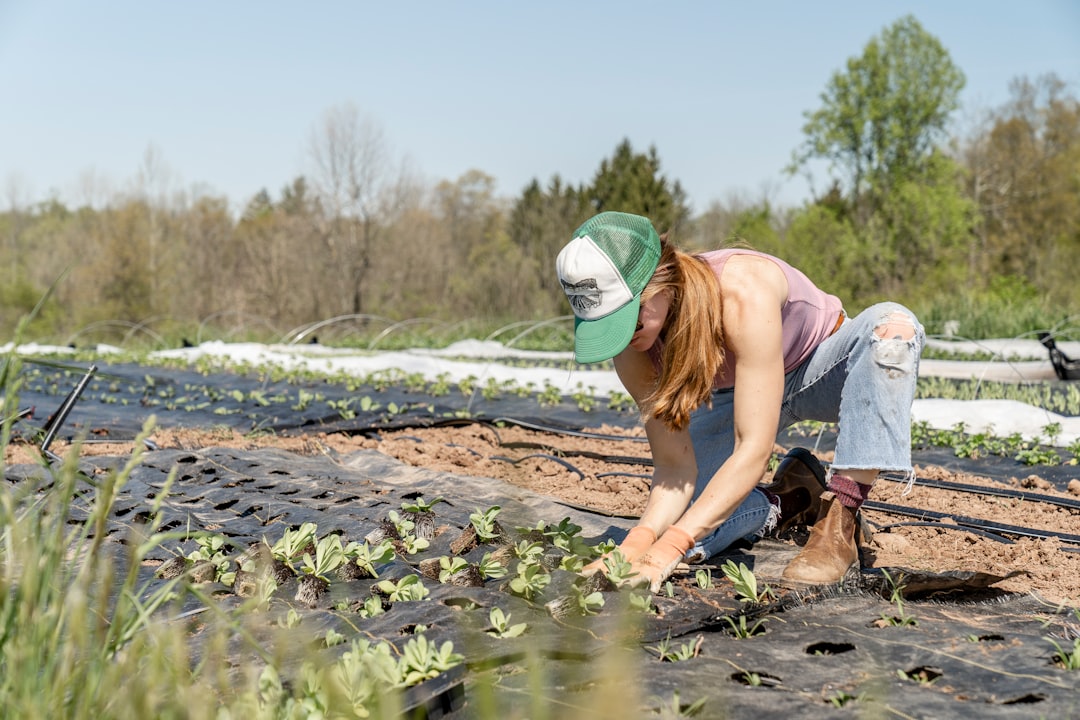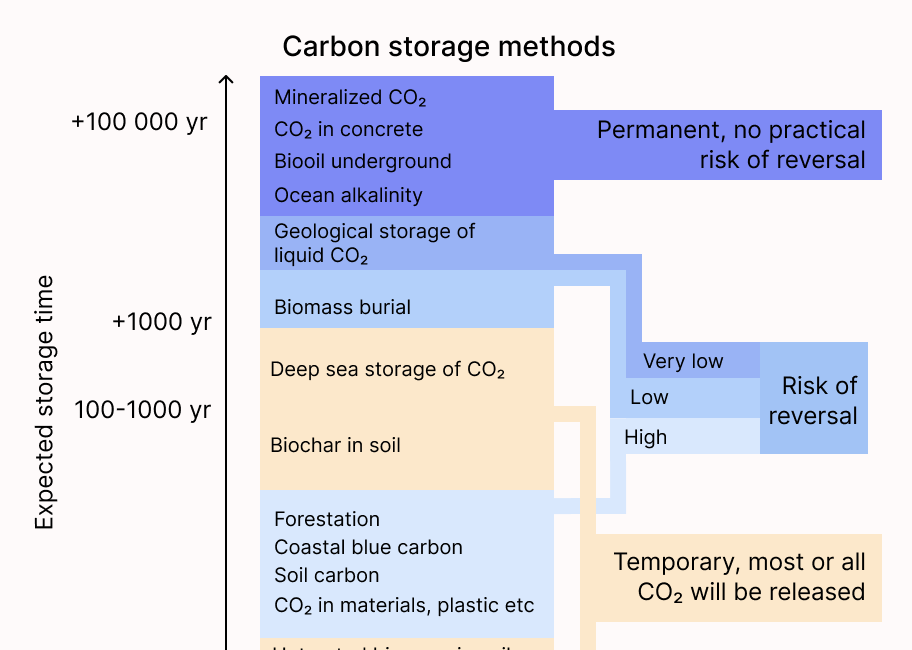Is soil carbon a viable carbon removal solution?
The EU is keen on including soil carbon through regenerative agriculture in their carbon removal framework, but do we know if it works?
Today the EU carbon removal expert group had a meeting discussing carbon farming, including increasing the stock of carbon in soils with the purpose to find methodologies to certify (I am in the group with observer status). It does not seem to be a well-known fact that there is no scientific consensus if commonly used methods used to store more carbon in soils actually work. (Here, I talk about regenerative agriculture. Biochar also technically stores carbon in soil. There are also new ways to store inorganic carbon in soils, but these are separate methods from what is discussed in this post.)
There have been a number of publications in the last couple of years calling the effectiveness of the soil carbon building methods and our knowledge of them into question.
The Environmental Defense Fund State of the Science report from 2022 found a "lack of consensus about the degree to which agricultural soils can be managed to sequester sufficient carbon dioxide to have an appreciable impact in mitigating climate change". They concluded that "Sequestering soil carbon remains an uncertain approach to climate change mitigation"[1].
Similarly, World Resource Institute researchers have found that ” [soil carbon practices] tend to have limited documentation and analysis of the feasibility of the massive expansion of practices they are relying on to sequester carbon. They also rely largely on practices that decrease crop production or on practices on working lands that more recent science has shown to be ineffective or less effective at sequestering soil carbon, such as no-till farming." [2].
For example, while topsoil carbon sequestration might seem promising at first glance for methods such as cover crops and no-till, studies that have considered soil carbon content at depths below the topsoil have shown an offset in the carbon sequestered in the topsoil by a decrease in deeper layers[3,4,5,6].
The EDF report and WRI explainer mentioned above are great overviews, highlighting the uncertainties. Moreover, a 2022 article suggests that "most of the management practices associated with regenerative agriculture are not likely to lead to a large net sequestration of organic carbon in soils"[7]. Adding to this, a recent review from 2023 outlines the lack of consensus on the mechanisms leading to carbon storage and addresses controversies related to agricultural and forestry management practices for soil carbon accumulation[8].
The use of soil carbon certificates as a tool for climate change mitigation has also been identified as unsuitable. A recent paper concludes, "While soil carbon certificates could provide a financial incentive for measures that are currently economically unviable, their use as voluntary emission offsets is highly problematic.”[9] The same study also calls into question modelling and remote sensing: "at the current state of knowledge, model-based or remote sensing-based approaches seem to have a limited potential in the context of carbon certificates as evidence regarding their ability to precisely detect SOC changes is insufficient and extensive input data is required for regional calibration and validation"[9].
Lastly, a study published in January 2023 stressed that "including saturation in estimations decreases any potential contribution of SOC sequestration to climate change mitigation by 53%–81% towards 2100". It also found that "the meta-analyses provide no convincing empirical support that there is a general positive correlation between SOC sequestration and improvements in crop yield"[10].
Taken together, these studies underline the profound uncertainties and limitations of soil carbon sequestration. It is essential that the EU does not certify any standards and methodologies to quantify soil carbon and issue carbon credits until there is greater scientific understanding and consensus around how the methods to sequester carbon in soils work. Regenerative agricultural methods, however, have other benefits though and should be pursued regardless of any carbon credits generated.
Note that even if the methods are proven to sequester carbon, problems around permanence, additionality and leakage of soil carbon methods remain. I have written about how to classify the lifetime of carbon storage solutions in the article below.
Carbon can be temporarily stored for a long time
And other surprising conclusions from thinking about permanence The most common way to talk about the longevity of carbon removed is to talk about permanent or temporary removal solutions. That is the vocabulary I have been using too. But in many cases, it does not accurately capture the characteristics of the storage methods available.
I believe that soil carbon credits could be used to offset soil carbon loss elsewhere and other time-matched emissions (not emissions from fossil fuels) following the like-for-like removal principle. But the methods to store more carbon in soils must be proven first.
Finally, soil carbon sequestration is better described as “carbon restoration” rather than carbon removal, as explained in the article below. In my opinion, the term carbon removal should be reserved for methods that durably store carbon away from the atmosphere.
Nature restoration and carbon removal are not the same. Here’s why it matters
Published 16 June 2022 on: https://www.climatechangenews.com/2022/06/13/nature-restoration-and-carbon-removal-are-not-the-same-heres-why-it-matters/ Humanity has increased the concentration of carbon dioxide in the atmosphere by burning fossil fuels, making cement, deforesting land, and degrading soils.
References
[1]: State of the Science: Cropland Soil Carbon Sequestration - Environmental Defense Fund and Natural Climate Solutions, Report: https://www.edf.org/sites/default/files/documents/ag-soil-C-state-of-the-science.pdf
[2]: Further Explanation on the Potential Contribution of Soil Carbon Sequestration on Working Agricultural Lands https://www.wri.org/technical-perspectives/insider-further-explanation-potential-contribution-soil-carbon-sequestration-working
[3]: Mechanisms underlying limited soil carbon gains in perennial and cover-cropped bioenergy systems revealed by stable isotopes https://onlinelibrary.wiley.com/doi/full/10.1111/gcbb.12657?af=R
[4]: Deep soil inventories reveal that impacts of cover crops and compost on soil carbon sequestration differ in surface and subsurface soils
https://onlinelibrary.wiley.com/doi/abs/10.1111/gcb.14762
[5] Can no-tillage stimulate carbon sequestration in agricultural soils? A meta-analysis of paired experiments https://www.sciencedirect.com/science/article/abs/pii/S0167880910002094 ,
and Declines in soil carbon storage under no tillage can be alleviated in the long run https://www.sciencedirect.com/science/article/abs/pii/S0016706122003354?dgcid=coauthor
[6] Carbon input differences as the main factor explaining the variability in soil organic C storage in no-tilled compared to inversion tilled agrosystems https://link.springer.com/article/10.1007/s10533-011-9600-4
[7]: Biogeochemical constraints on climate change mitigation through regenerative farming https://link.springer.com/article/10.1007/s10533-022-00942-8
[8]: Current controversies on mechanisms controlling soil carbon storage: implications for interactions with practitioners and policy-makers. A review https://link.springer.com/article/10.1007/s13593-023-00876-x
[9]: Carbon farming: Are soil carbon certificates a suitable tool for climate change mitigation? https://www.sciencedirect.com/science/article/pii/S0301479722027153
[10]: Carbon for soils, not soils for carbon https://onlinelibrary.wiley.com/doi/10.1111/gcb.16570






Does it seem likely that EU regulators attempt to certify soil carbon standards/methodologies or are they just conducting due diligence? Are they experiencing external pressure to do so?